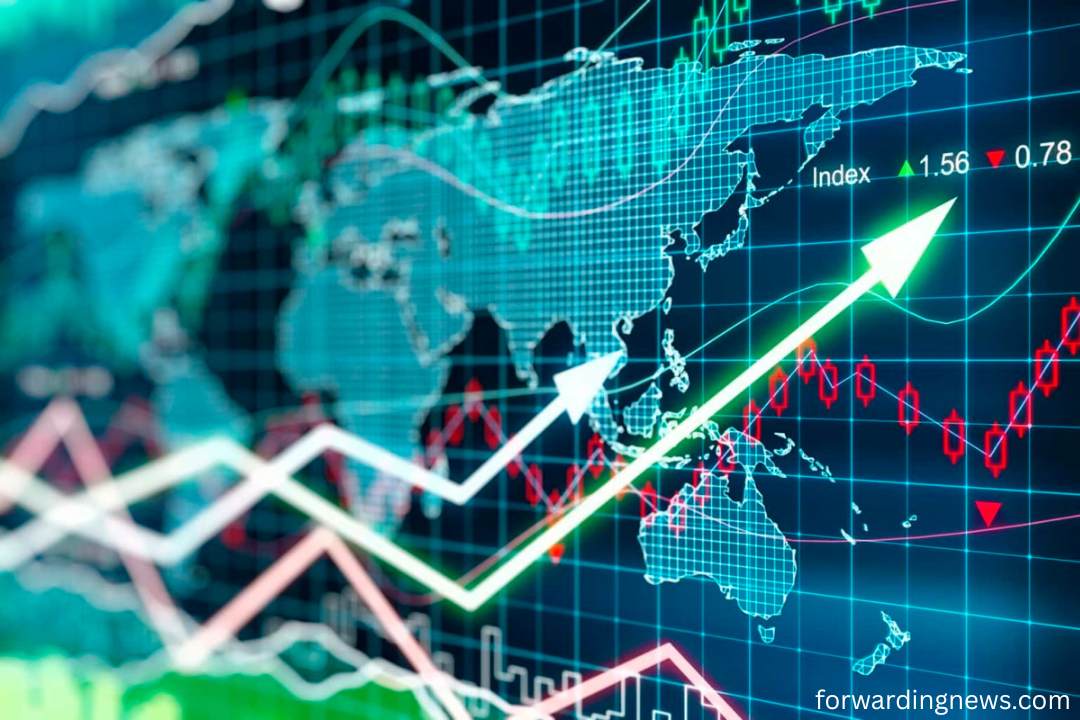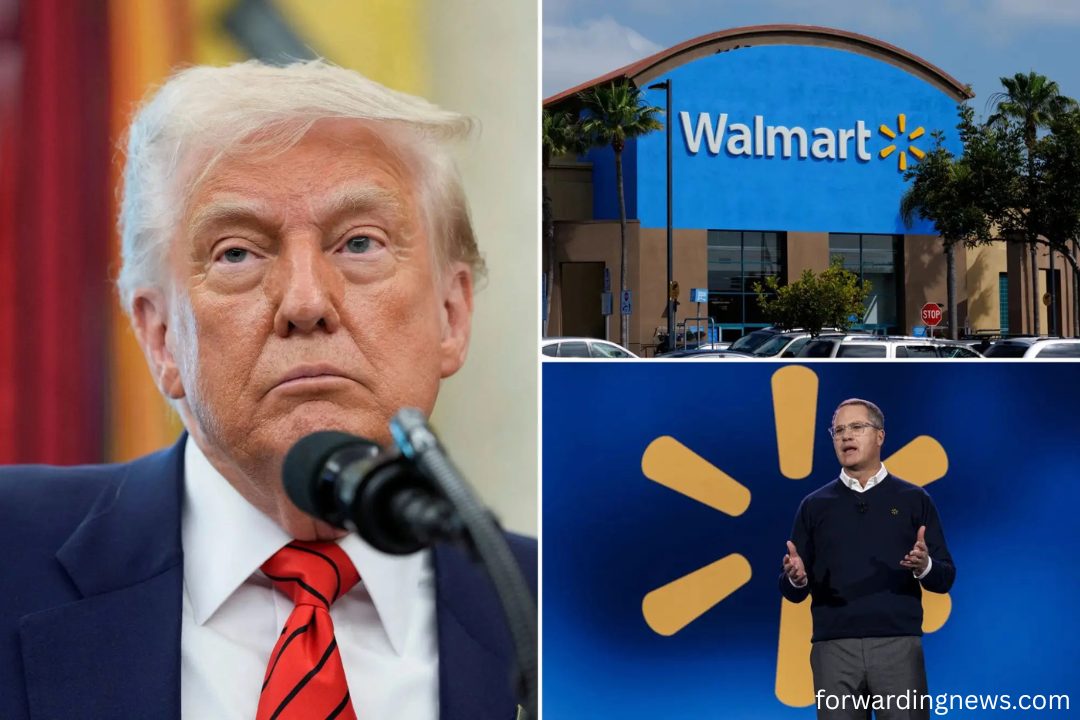Trump reignited trade tensions by directly addressing Walmart in response to the retailer’s warning about upcoming price hikes. With global supply chain disruptions and escalating U.S.–China tariffs, Walmart’s business model—centered on affordability—faces growing pressure. Trump’s comment, telling Walmart to “eat the tariffs,” underscores the broader clash between government trade policy and corporate pricing strategy.
Walmart’s Warning on Consumer Prices
As the largest retailer in the United States, Walmart plays a pivotal role in shaping the nation’s retail landscape. When the company publicly announced that tariffs would likely force it to raise prices on consumer goods, it sent ripples across the market and political sectors.
Walmart executives noted that tariffs on Chinese imports were increasing operational costs. Categories like electronics, household items, and clothing—much of which is sourced from Asia—are especially vulnerable. The company emphasized that it would do its best to mitigate the impact but could not completely absorb the added costs.
Trump’s Response – Walmart Should Absorb the Tariffs
In a move that sparked widespread debate, Trump responded bluntly, saying Walmart should “eat the tariffs” instead of passing the costs onto consumers. He argued that big companies like Walmart are profitable enough to shoulder short-term losses for the sake of long-term national trade strategy.
The former president has long advocated for a more protectionist trade stance, mainly targeting China for what he describes as unfair trade practices. His remark to Walmart is consistent with his administration’s approach—using tariffs as leverage and expecting American companies to align with the broader economic agenda.
Walmart’s Business Model at Risk
Walmart’s competitive edge is rooted in its ability to offer low prices across a vast selection of goods. With razor-thin margins in many product categories, absorbing tariffs is not a sustainable long-term strategy for the company.
Walmart’s global sourcing network depends heavily on China and other low-cost manufacturing countries. Tariffs disrupt this model by inflating the costs of goods sold. While Walmart may absorb some of these costs temporarily, continued tariff pressures could force the company to reevaluate suppliers, negotiate new contracts, or shift operations—each of which carries its risks and costs.
Consumer Impact of Walmart’s Price Increases
Price hikes from Walmart are not just a corporate issue—they affect millions of consumers. As a go-to destination for budget-conscious shoppers, Walmart is where many Americans buy groceries, school supplies, electronics, and more. Increased prices could reduce purchasing power, especially for low- and middle-income households.
According to economists, if Walmart raises prices even modestly across key categories, the ripple effect could influence broader inflation metrics and impact consumer sentiment. It could also trigger price increases across competitors like Target, Costco, and regional chains.
Political Ramifications of the Walmart-Tariff Debate
Trump’s comments targeting Walmart reflect a more significant political narrative. The divide between corporate interests and populist economic policies continues to widen. While Walmart argues that tariffs strain its business and harm consumers, Trump and his allies maintain that harsh trade measures are essential for protecting American industries.
This debate will likely intensify during election cycles, with candidates using companies like Walmart as proxies for more significant economic issues. Public opinion is also split—some consumers support tariff policies aimed at revitalizing U.S. manufacturing, while others are more concerned about rising costs at the checkout line.
Walmart’s Strategies to Navigate Tariffs
Supply Chain Diversification
In response to tariffs, Walmart is expanding its supplier network beyond China. Countries like Vietnam, India, and Mexico are emerging as alternative sources of manufactured goods. Diversifying suppliers helps Walmart reduce reliance on any single country and manage tariff-related risks.
Contract Negotiations
Walmart is also renegotiating contracts with existing suppliers to share tariff burdens. This approach helps control costs without passing them entirely to consumers. However, not all suppliers have the capacity to absorb extra costs, making negotiations complex.
Technology and Automation
To offset increased expenses, Walmart continues to invest in automation and supply chain technology. By improving logistics and reducing inefficiencies, Walmart aims to protect its margins while maintaining price competitiveness.
Historical Context – Walmart and U.S. Trade Policy
Walmart has historically benefited from globalization and free trade. The retailer’s growth was supercharged by access to low-cost manufacturing hubs, particularly in Asia. However, the shift toward protectionist trade policies—accelerated under Trump’s administration—challenges this model.
In previous tariff waves, Walmart issued similar warnings and adjusted its sourcing strategies accordingly. Each time, the company tried to balance profitability with customer loyalty. The latest round of tariffs has brought renewed urgency to these efforts.
Expert Opinions on Trump’s Statement
Economists and trade experts were divided on Trump’s directive for Walmart to absorb tariffs. Some argue that it reflects a misunderstanding of retail economics, where even small cost increases can significantly affect margins. Others say that Walmart, as a corporate giant, has a responsibility to help cushion consumers from policy impacts.
Still, most agree that absorbing tariffs is not a feasible long-term strategy for Walmart or any large retailer. Without systemic changes in trade policy or manufacturing, costs will inevitably be passed down to consumers.
What This Means for Retail and the Economy

Walmart’s tariff dilemma is a microcosm of broader economic challenges. As global trade becomes more politicized, companies must navigate an unpredictable landscape. The tension between corporate pragmatism and political messaging—evident in Trump’s comments to Walmart—will likely persist.
Retailers must prepare for more volatility, including currency fluctuations, sudden policy shifts, and changing consumer behavior. Companies like Walmart that succeed will be those that adapt quickly, manage costs strategically, and communicate transparently with customers and policymakers.
Frequently Asked Questions (FAQ’s)
Why did Trump tell Walmart to “eat the tariffs”?
Trump suggested Walmart should absorb tariff-related costs rather than raise consumer prices. He believes large corporations should support national trade goals.
How do tariffs impact Walmart?
Tariffs increase the cost of imported goods. For Walmart, this affects product pricing, sourcing, and overall profitability, potentially leading to higher prices for customers.
Can Walmart absorb tariffs without raising prices?
Walmart may absorb some costs temporarily, but long-term sustainability requires price adjustments or sourcing changes to maintain margins.
Which products at Walmart are most affected by tariffs?
Electronics, home goods, clothing, and some grocery items—especially those sourced from China—are most vulnerable to tariff impacts at Walmart.
Is Walmart shifting its supply chain due to tariffs?
Yes, Walmart is exploring suppliers in countries like Vietnam and Mexico to reduce reliance on China and mitigate tariff exposure.
How do Walmart’s actions affect consumers?
Price increases at Walmart can reduce consumer spending power, especially among price-sensitive demographics that rely on the retailer for everyday goods.
Will tariffs lead to inflation?
If Walmart and other retailers raise prices across product lines, it can contribute to overall inflation, particularly in sectors like food and electronics.
What can consumers expect in the future?
As long as tariffs remain in place, Walmart will likely continue adjusting prices, sourcing strategies, and promotional efforts to balance costs and customer expectations.
Conclusion
The ongoing dispute between Trump and Walmart over tariff-related price increases underscores the broader conflict between political trade strategies and retail economics. As tariffs drive up costs, Walmart faces the challenge of maintaining its low-price model while protecting its bottom line. While Trump’s call for Walmart to “eat the tariffs” appeals to nationalist sentiment, it overlooks the financial strain such policies impose on retailers and consumers alike. Walmart’s efforts to diversify suppliers and optimize operations reflect a strategic response to evolving global trade conditions, highlighting the complex interplay between policy, business, and consumer impact in today’s economy.

